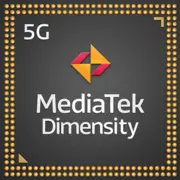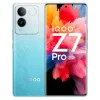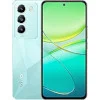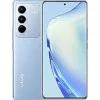MediaTek Dimensity 7200

MediaTek Dimensity 7200: Balance of Power and Efficiency in Mid-Range Smartphones of 2025
April 2025
The modern mobile processor market offers a plethora of options for various segments, but the MediaTek Dimensity 7200 has become one of the most discussed chips in the $350–500 category. This processor combines cutting-edge technology, energy efficiency, and sufficient power for most use cases. Let's explore why it attracts attention and who it is suitable for.
1. Architecture and Process Technology: 4 nm and Hybrid Core Structure
The MediaTek Dimensity 7200 is built on TSMC's 4-nanometer process technology, which ensures low power consumption and high transistor density. Its architecture includes:
- 8 cores with a hybrid arrangement:
- 2 high-performance Cortex-A715 cores clocked at 2.8 GHz for demanding tasks.
- 6 energy-efficient Cortex-A510 cores (2.0 GHz) for background processes.
- Cache: 1 MB L2, which speeds up processing of frequently used data.
- GPU Mali-G610 MP4 with support for API Vulkan 1.3 and a frequency of up to 950 MHz.
Thanks to the 4-nanometer process, the chip maintains low heat even under load, and the separation of cores into clusters allows for flexible task allocation, saving battery life.
2. Performance in Real-World Scenarios: From Gaming to AI
Gaming: The Mali-G610 MP4 handles titles like Genshin Impact at medium settings (40–50 FPS) and PUBG Mobile at high settings (60 FPS). Support for displays with a 120 Hz refresh rate makes gaming smooth; however, for top-tier games like Honkai: Star Rail in maximum quality, power may fall short.
Multimedia: The chip decodes 4K@60 FPS video in HDR10+ and AV1 formats, which is relevant for streaming. The built-in Imagiq 765 processor enhances photo quality: night mode, stabilization, and AI filters work without lag.
AI Tasks: The third-generation NPU speeds up object recognition in frames, automatic camera settings, and voice assistant operations. For instance, processing photos with neural networks takes 20% less time compared to Dimensity 7000.
Energy Consumption: A TDP of 8 W and UltraSave 3.0+ technology optimize power usage. In PCMark tests (web browsing, video), a smartphone with a 5000 mAh battery runs for up to 14 hours. With active use (gaming, shooting), the time shortens to 5–6 hours.
Thermal Management: Even after an hour of gaming, the device's temperature rarely exceeds 40°C, thanks to a copper heatsink in the SoC and dynamic control algorithms.
3. Integrated Modules: 5G, Wi-Fi 6E, and Navigation
- 5G Sub-6 GHz modem with speeds of up to 4.7 Gbps (download) and 2.5 Gbps (upload). Supports Dual SIM 5G+5G.
- Wi-Fi 6E (up to 3.6 Gbps) and Bluetooth 5.3 with LE Audio for connecting to low-latency wireless headphones.
- Satellite Navigation: GPS (L1+L5), GLONASS, Galileo, QZSS. Positioning accuracy is up to 1 meter in open areas.
The absence of mmWave-5G and Wi-Fi 7 is a compromise to reduce device prices.
4. Comparison with Competitors
Qualcomm Snapdragon 7 Gen 2:
- Performs better in gaming (Adreno 710 vs Mali-G610) and AI performance (+15% in MLPerf tests).
- More expensive: Smartphones with SD7G2 start at $500.
Exynos 1380:
- Similar CPU performance, but weaker GPU (-10% in 3DMark Wild Life).
- Less energy-efficient (TDP 9 W).
Dimensity 8000 (2023):
- Uses an outdated 5-nm process, resulting in higher heat.
- Multi-Core performance in Geekbench 6 is 8% lower than that of the 7200.
Conclusion: The Dimensity 7200 wins on price, energy consumption, and adequate power.
5. Use Cases: Who is it Suitable For?
- Gaming: For casual gaming and medium settings in AAA titles.
- Daily Tasks: Social media, streaming, multitasking (8 GB of RAM is sufficient for 10 tabs in Chrome).
- Photo and Video: Capturing 108 MP photos, recording 4K@30 FPS with EIS. Night shots have less noise compared to Snapdragon 685.
Examples of devices:
- Xiaomi Redmi Note 14 Pro ($399): 6.7" AMOLED 120 Hz, 108 MP camera.
- Realme 11X 5G ($369): 5000 mAh, 67 W charging.
6. Pros and Cons
Pros:
- Energy efficiency with 4 nm.
- Support for modern communication standards.
- Sufficient performance for most tasks.
Cons:
- No Wi-Fi 7 and mmWave-5G.
- Mali-G610 MP4 lags behind Adreno in gaming.
7. Tips for Choosing a Smartphone
- RAM: At least 8 GB for gaming and multitasking.
- Cooling: Look for models with a vapor chamber (e.g., Poco X6).
- Display: 120 Hz for a smooth interface.
- Battery: 5000 mAh compensates for active use.
Devices powered by the Dimensity 7200 are often mid-range smartphones focused on battery life and camera quality.
8. Final Conclusion
The MediaTek Dimensity 7200 is an ideal choice for those seeking a smartphone under $500 with 5G support, a good camera, and smooth performance. It is suitable for:
- Students — for studying, streaming, and light gaming.
- Travelers — thanks to accurate navigation and good battery life.
- Content Creators — capturing and editing in 4K without hiccups.
The main advantage: saving $100–150 compared to flagships without sacrificing key features. If you don't need ultimate gaming capabilities or 8K shooting — the Dimensity 7200 is a sensible compromise.
Prices are current as of April 2025. Devices are available in global retail and online stores.
Basic
6x 2 GHz – Cortex-A510
GPU Specifications
Connectivity
Memory Specifications
Miscellaneous
Benchmarks
Phones with Dimensity 7200





Comparison of Devices with Dimensity 7200
Compared to Other SoC
Related SoC Comparisons
Share in social media
Or Link To Us
<a href="https://cputronic.com/en/soc/mediatek-dimensity-7200" target="_blank">MediaTek Dimensity 7200</a>

